25 years with Hubble
The most famous space telescope in a quarter century in orbit
 On April 24, 1990, a space telescope was launched into Earth’s orbit, named after the American astronomer Edwin Hubble . A whole generation of people has grown since the start of work, which takes the Hubble for granted, so it's easy to forget how revolutionary this device was. At the moment, he is still working, perhaps he will last another five years. A week, the telescope transmits approximately 120 gigabytes of scientific data; over the course of the functioning of the images, more than 10 thousand scientific articles were collected.
On April 24, 1990, a space telescope was launched into Earth’s orbit, named after the American astronomer Edwin Hubble . A whole generation of people has grown since the start of work, which takes the Hubble for granted, so it's easy to forget how revolutionary this device was. At the moment, he is still working, perhaps he will last another five years. A week, the telescope transmits approximately 120 gigabytes of scientific data; over the course of the functioning of the images, more than 10 thousand scientific articles were collected. The follower of the Hubble will be the James Webb Space Telescope. The project of the latter is experiencing significant budget overruns and missed deadlines for more than 5 years. With Hubble, everything happened the same way, even worse - funding problems andthe Challenger disaster , and later Columbia . In 1972, it was estimated that the program would cost $ 300 million (taking into account inflation this is about 590 million). By the time the telescope finally reached the launch pad, the price had increased several times to about $ 2.5 billion. By 2006, it was estimated that the Hubble cost 9 billion (10.75 billion with inflation), plus five space flights of space shuttles for maintenance and repair, each launch of which cost approximately 500 million.
The main detail of the telescope is a mirror with a diameter of 2.4 meters. In general, a telescope with a mirror diameter of 3 meters was planned, and they wanted to launch it in 1979. But in 1974, the program was struck out of the budget, and only thanks to lobbying did astronomers manage to get the amount half the amount originally requested. Therefore, I had to moderate the ardor and reduce the scope of the future project.
Optically, the Hubble is an implementation of the Ritchie-Chretien system, widespread among scientific telescopes, with two mirrors. It allows you to get a good viewing angle and excellent image quality, but the mirrors have a difficult to manufacture and test form. Optical systems and mirrors must be manufactured with minimum tolerances. The mirrors of ordinary telescopes are polished to a tolerance of about a tenth of the length of visible light, but the Hubble had to make observations, including ultraviolet light, light with shorter waves. Therefore, mirror polished with a tolerance of 10 nm, 1 / 65 the length of red light. By the way, mirrors are heated to a temperature of 15 degrees, which limits the performance in the infrared range - another limit of the visible spectrum.
One mirror was made by Kodak, the other by Itek. The first is in the National Museum of Aviation and Cosmonautics, the second is used at the Magdalena Ridge Observatory. These were spare mirrors, and what’s in the Hubble was produced by Perkin-Elmer using the most sophisticated CNC machines, which led to another deadline. Work on polishing a workpiece from Corning (the very one that Gorilla Glass does) began only in 1979. Microgravity conditions were simulated by placing a mirror on 130 rods, the support force of which varied. The process continued until May 1981. The glass was washed with 9,100 liters of hot demineralized water and two layers were applied: a 65-nanometer reflective layer of aluminum and a 25-nanometer protective magnesium fluoride.
And the launch dates continued to be postponed: first until October 1984, after until April 1985, until March 1986, until September. Each quarter of the Perkin-Elmer operation led to a shift of the deadlines by a month, at some points every day of the work pushed back the launch by a day. The company's work schedules did not satisfy NASA with its vagueness and uncertainty. The project cost has already risen to $ 1,175 million.
The body of the apparatus was another headache, it had to be able to withstand both direct exposure to sunlight and the darkness of the Earth’s shadow. And these temperature jumps threatened the exact systems of a scientific telescope. Hubble walls consist of several layers of thermal insulation, which are surrounded by a light aluminum shell. Inside the equipment is placed in a graphite-epoxy frame. To avoid the absorption of water by hygroscopic compounds of graphite and the ingress of ice into the devices, nitrogen was pumped in before starting. Although the manufacture of the spacecraft was much more stable than the optical systems of the telescope, organizational problems were here. By the summer of 1985, Lockheed Corporation, which worked on the device, went 30% beyond the budget and three months behind the schedule.
Hubble had five scientific instruments at launch, and later all of them were replaced during maintenance in orbit. Wide-angle and planetary cameras performed optical observations. The instrument had 48 spectral line filters to isolate specific elements. Eight CCDs were divided between two cameras, four each. Each matrix had a resolution of 0.64 megapixels. The wide-angle camera had a large viewing angle, while the planetary one had a greater focal length and, therefore, gave a larger increase. AndrewBuck, Distorted, Erden Karsybekov, Vort, Dodonov; Wikimedia commons
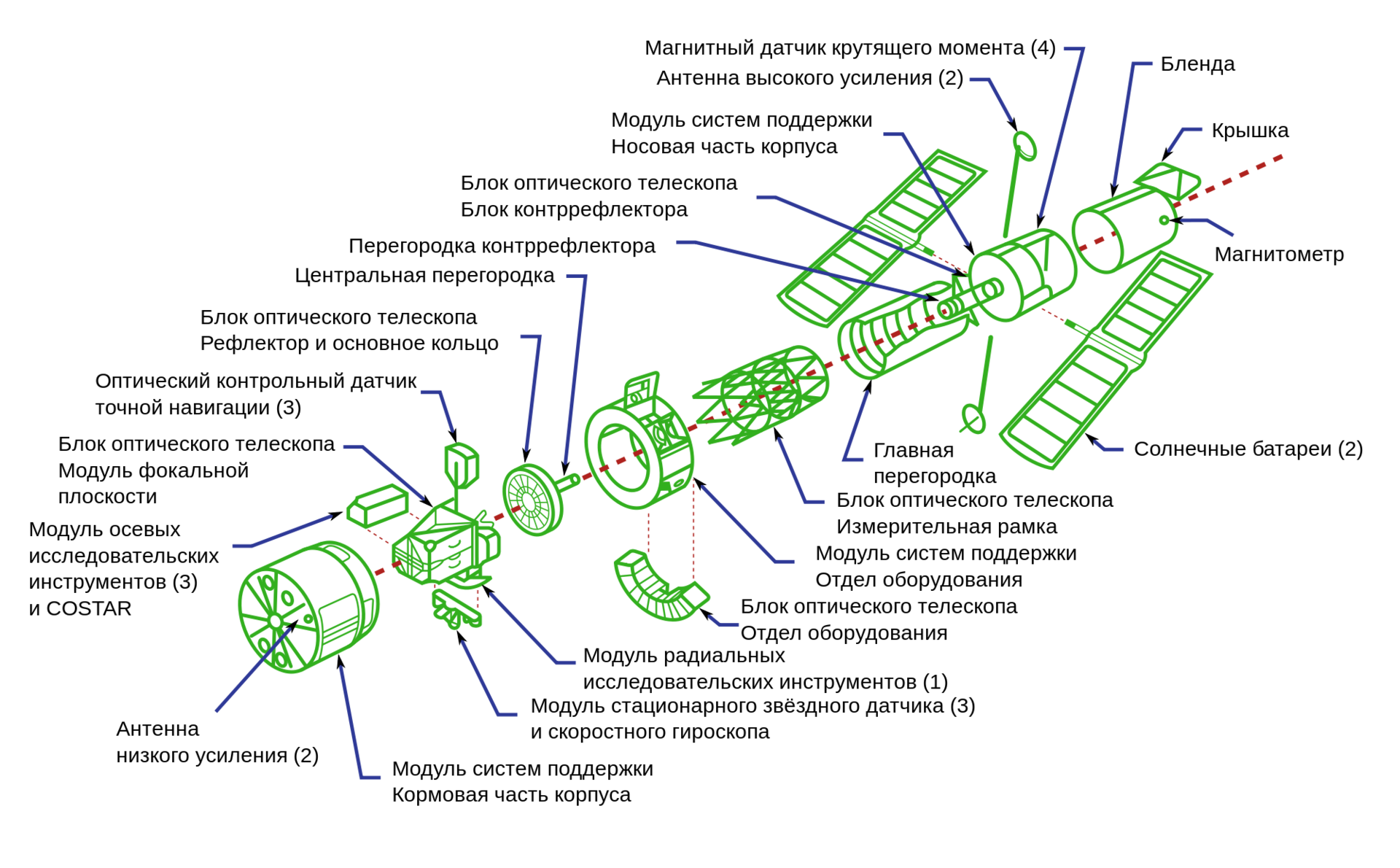
The high-resolution spectrograph created by the Goddard Space Flight Center worked in the ultraviolet range. Also in the UV, a dim objects camera developed by the European Space Agency and a dim objects spectrograph from the University of California and Martin Marietta Corporation were observed. The University of Wisconsin-Madison has created a high-speed photometer for observing visible light and the ultraviolet radiation range of stars and other astronomical objects with varying brightness. He could make up to 100 thousand measurements per second with photometric accuracy of 2% or better. Finally, telescope guidance sensors could be used as a scientific tool; they made it possible to conduct very accurate astrometry.
On Earth, Hubble research is managed by the Space Research Institute, specially created in 1981, using a space telescope. Its formation took place not without a fight: NASA wanted to control the device with its own hands, but the scientific community was not in agreement.
The Hubble orbit was chosen so that it was possible to fly up to the telescope and perform maintenance. Half of the orbit is prevented by observations of the Earth, the Sun and the Moon should not be in the way, also the Brazilian magnetic anomaly interferes with the scientific process, when flying over it the level of radiation increases sharply. The Hubble is located at an altitude of 569 kilometers, the inclination of its orbit is 28.5 °. Due to the presence of the upper atmosphere, the position of the telescope can change unpredictably, so it is impossible to accurately predict the position for long periods of time. The work schedule is usually approved only a few days before the start, because it is not clear whether it will be possible to observe the desired object by that time.
By the beginning of 1986, a launch began to loom in October, but the Challenger disaster moved all deadlines. The space shuttle - similar to the one that was supposed to deliver a unique billion-dollar telescope into orbit - exploded in a cloudless sky at 73 seconds of flight, killing seven people. Until 1988, the entire fleet of shuttles was at a joke while an investigation was conducted into what happened. By the way, waiting was also expensive: the Hubble was kept in a clean room in a nitrogen-filled state. Each month was worth approximately $ 6 million. Time was not wasted, the unreliable battery was changed in the device and several other improvements were made. In 1986 there was no software filling the ground control systems, and the software was barely ready for launch in 1990.
On April 24, 1990, 25 years ago, with several times the budget, the telescope was finally launched into its orbit. But this is where the difficulties have just begun. STS-31, telescope leaves the cargo compartment of the Shuttle Discovery
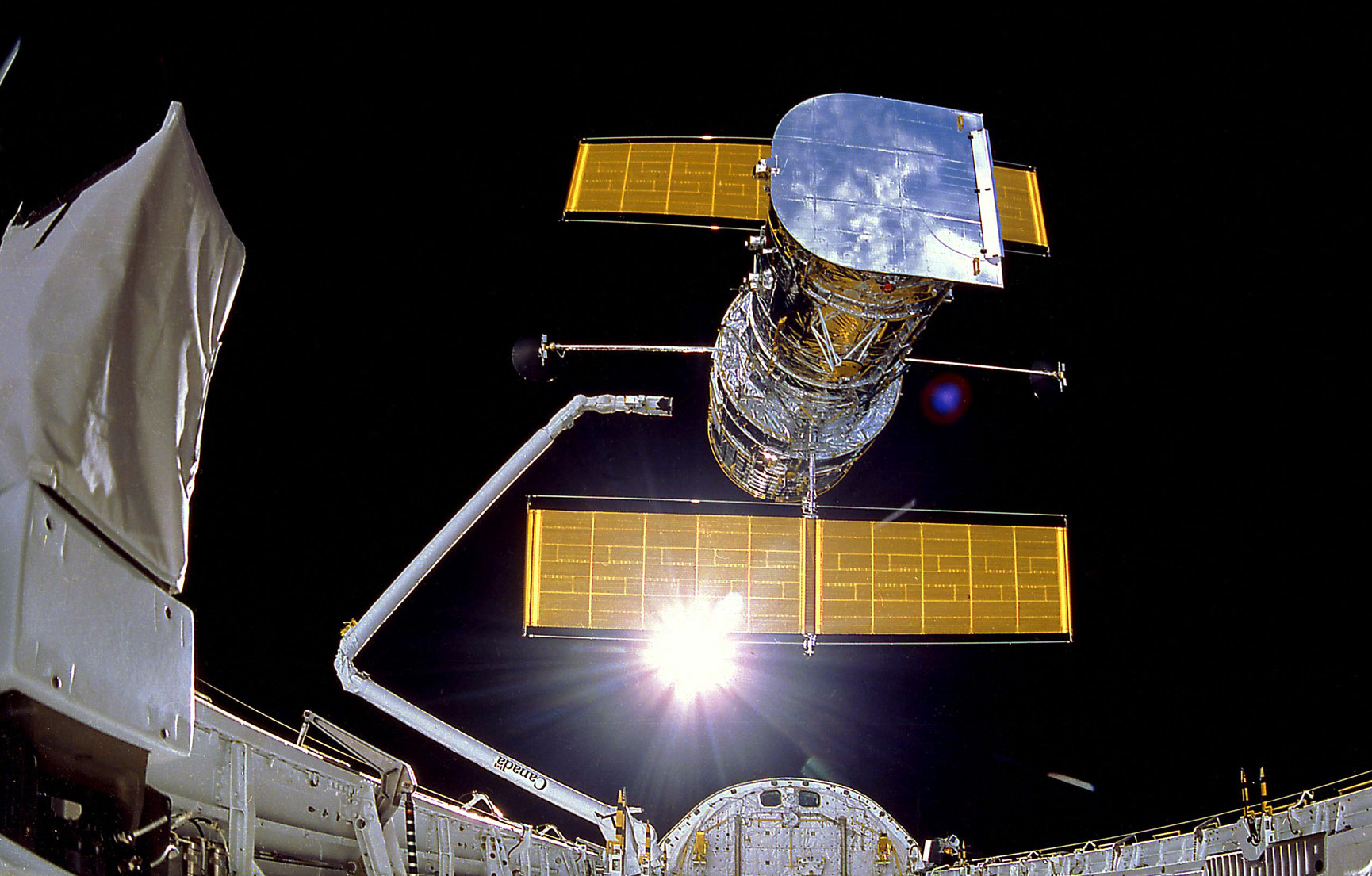
After a few weeks, it became clear that the optical system has a serious defect. Yes, the first images were sharper than from ground-based telescopes, but the Hubble could not achieve its stated characteristics. Point sources looked like circles the size of 1 arc second instead of a circle of 0.1 arc second. As it turned out, NASA was not in vain worried about the competency of Perkin-Elmer - the mirror had a shape deviation at the edges of about 2200 nanometers. The defect was catastrophic because it led to strong spherical aberration, that is, the light reflected from the edges of the mirror was focused at a point different from the one at which the light reflected from the center was focused. Because of this, spectroscopy was not much affected, but the observation of dim objects was difficult, which put an end to most cosmological programs.
Despite the fact that he made some observations, possible thanks to sophisticated image processing techniques on Earth, Hubble was considered a failed project, and NASA's reputation was seriously tarnished. They began to joke about the telescope, for example, in the movie “The Naked Gun 2½: The Smell of Fear”, the spacecraft is compared with the Titanic, the failed Edsel brand car and the most famous fall of the airship - the Hindenburg accident . A black and white photograph of a telescope is present in one of the paintings.

It is believed that the cause of the defect was an error during the installation of the main zero-corrector, a device that helps to achieve the desired surface curvature parameter. One of the lenses of the device was shifted by 1.3 millimeters. During work, Perkin-Elmer specialists analyzed the surface with the help of two zero-correctors, then for the final stage a special zero-corrector was used, created for very strict tolerances. As a result, the mirror turned out to be very accurate, but it had the wrong shape. Later, an error was discovered - two ordinary zero-corrector talked about the presence of spherical aberration, but the company chose to ignore their measurements. Perkin-Elmer and NASA began to sort things out. The American Space Agency believed that the company did not follow the manufacturing process properly and did not use its best workers in the manufacturing and quality control process. However, it was clear that part of the blame lay with NASA.
The good news was that the telescope was designed for maintenance — the first as early as 1993, so the search for a solution to the problem was started. There was a backup mirror on Earth from the Kodak, but it was impossible to change it in orbit, and it would be too expensive and long to launch the spacecraft on the shuttle. The mirror was made exactly, but it had the wrong shape, so it was proposed to add new optical components to compensate for the error. By analyzing point light sources, it was determined that the conical constant of the mirror was −1.01390 ± 0.0002 instead of the required −1.00230. The same figure was obtained by processing the error data of the Perkin-Elmer null corrector and analyzing interferograms for testing.
Error correction was added to the CCDs of the second version of the wide-angle and planetary cameras, but it was impossible to do this for other tools. They needed another external optical correction device called Corrective Optics Space Telescope Axial Replacement (COSTAR). Roughly speaking, glasses were made for the telescope. There was not enough space for COSTAR, so I had to abandon the high-speed photometer.
In December 1993, the first maintenance flight was carried out. The first mission was the most important. In total, five of them were carried out, during each space shuttle came closer to the telescope, then with the help of the manipulator, tools and failed devices were replaced. For one or two weeks, several spacewalks were carried out, and after the telescope’s orbit was corrected - it constantly descended due to the influence of the upper atmosphere. Thus, it was possible to upgrade the equipment of the aging Hubble to the most modern.
The first maintenance operation was carried out from Inedevora and lasted 10 days. In place of the high-speed photometer, COSTAR correction optics were installed; the first version of the wide-angle and planetary cameras was replaced by the second. The solar panels and their electronics, four gyroscopes of the telescope guidance system, two magnetometers, on-board computers and various electrical systems were replaced. The flight was deemed successful. Photo of the M 100 galaxy before and after the installation of correction systems
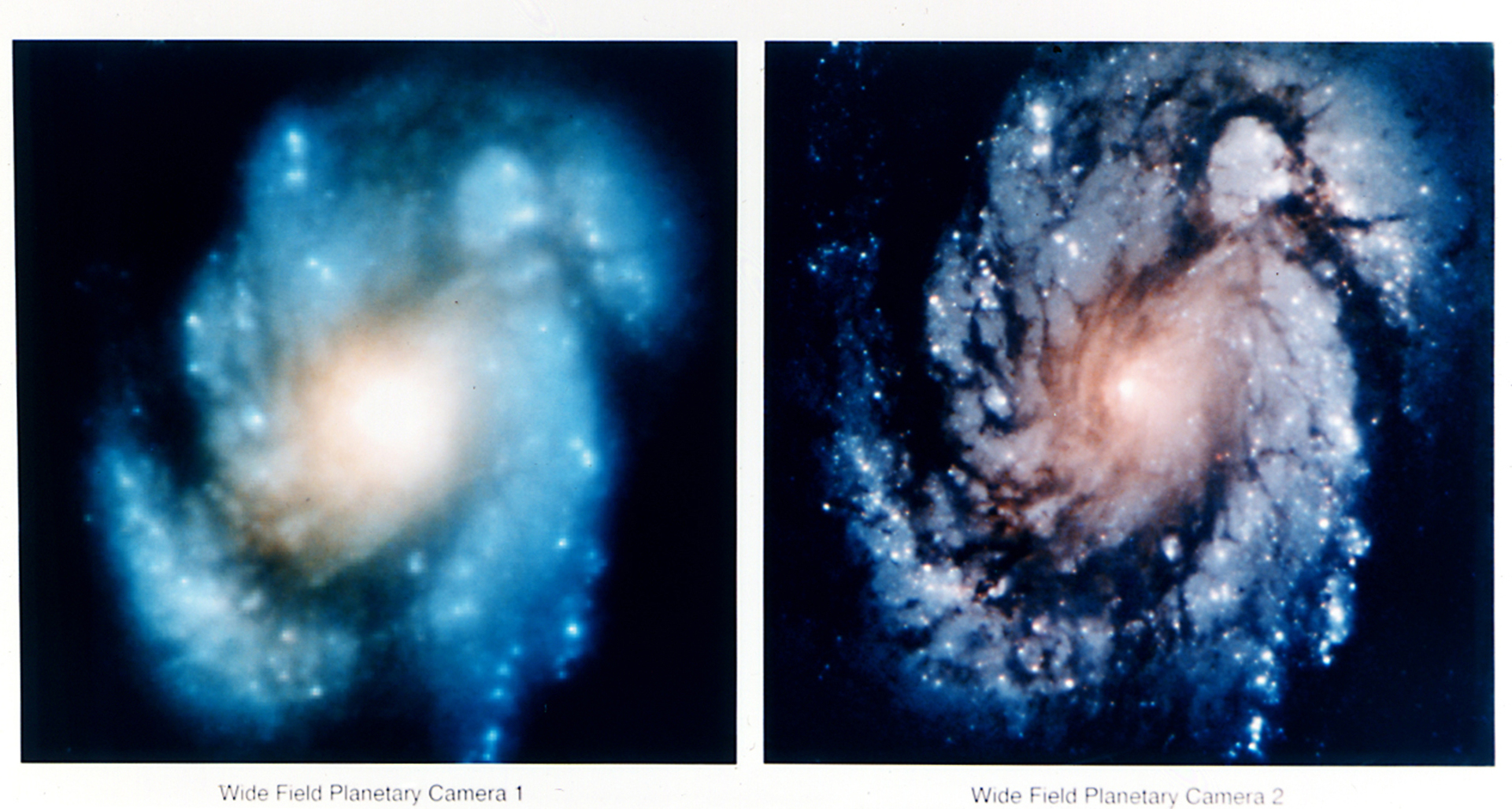
The second maintenance operation was carried out in February 1997 from the Discovery shuttle. A high resolution spectrograph and a dim objects spectrograph were taken from the telescope. They were replaced by STIS (a recording spectrograph of a space telescope) and NICMOS (a camera and a multi-object near-infrared spectrometer). NICMOS was cooled with liquid nitrogen to reduce noise, but as a result of unforeseen expansion of parts and increased heating rate, the service life fell from 4.5 years to 2. Initially, the Hubble data storage device was tape, it was replaced by a solid-state one. Also, the apparatus corrected thermal insulation.
There were five service flights, but they are counted in the order of 1, 2, 3A, 3B and 4, and despite the proximity of the names, 3A and 3B were not carried out immediately one after the other, as one might assume. The third flight took place in December 1999 on the Shuttle Discovery, it was caused by the breakdown of four of the six telescope gyroscopes. All six gyroscopes, guidance sensors, an on-board computer were replaced - now there was an Intel 80486 processor with a frequency of 25 MHz. Prior to that, Hubble used the DF-224 with a primary processor with a frequency of 1.25 MHz and two of the same standby ones, a magnetic wire drive of six banks with 8K 24-bit words, and four banks could work simultaneously. This photo was taken by Scott Kelly during his third maintenance . Today he

is on the ISS as part of an experiment to study the biological effects of long-term space flight on the human body.
The fourth (or 3B) flight was conducted on Columbia in March 2002. The last original device - a camera for shooting dim objects - was replaced with an improved surveillance camera. The second time the solar panels were replaced, the new ones were 30% more powerful. NICMOS was able to continue functioning thanks to the installation of experimental cryo-cooling.
From that moment on, all Hubble tools had a correction for the mirror error, and the need for COSTAR disappeared. But he was removed only in the final service flight, which occurred after the Columbia disaster. During the next Hubble flight, the shuttle collapsed upon returning to Earth - this was caused by a violation of the heat-protective layer. The deaths of seven people pushed back to their original date in February 2005 for an indefinite period. The fact is that now all the flights of the shuttles had to be carried out in orbit, which made it possible to reach the International Space Station in case of unforeseen problems. But not one shuttle could reach both the Hubble orbit and the ISS in one flight - there was not enough fuel. The James Webb Telescope was planned to be launched only in 2018, which meant an empty gap after the completion of the Hubble.
Under pressure from Congress in January 2004, the NASA administration announced that the cancellation decision would be reviewed. In August, the Goddard Space Flight Center began preparing proposals for a fully remotely controlled flight, but plans were later canceled - they were deemed unworkable. In April 2005, NASA's new administrator, Michael Griffin, allowed the possibility of a manned flight to Hubble. In October 2006, intentions were finally confirmed, and an 11-day flight was scheduled for September 2008.
Later, the flight was postponed until May 2009. From Atlantis, STIS and an improved viewing camera were repaired. Two new nickel-hydrogen batteries were installed at Hubble, and guidance sensors and other systems were replaced. Instead of COSTAR, an ultraviolet spectrograph was installed on the telescope, and a system was added for future capture and disposal of the telescope, either using a manned or fully automatic launch. The second version of the wide-angle camera was replaced with a third. As a result of all the work performed, the telescope continues to supply scientists with new data now .
The telescope made it possible to clarify the Hubble constant , confirmed the hypothesis of the isotropy of the universe, discovered the satellite of Neptuneand did many other scientific studies. But for the layman, “Hubble” is primarily important with a huge number of colorful photographs. Some technical publications believe that these colors do not actually exist, but this is not entirely true. Color is a representation in the human brain, and pictures are colored using analysis of radiation of various wavelengths. The electron, passing from the second to the third level of the structure of the hydrogen atom, emits light with a wavelength of 656 nanometers, and we call it red. Our eyes adapt to different brightnesses, so creating an exact reflection of colors is not always possible. Some telescopes can capture the spectra of ultraviolet or infrared radiation that are invisible to the human eye, and their data also needs to be somehow reflected in photographs.
Astronomy uses the FITS format , Flexible Image Transport System . In it, all the data is presented in text form, it is a kind of analogue of the RAW format. To get at least something, you need to perform processing. For example, the eyes perceive light in a logarithmic scale, and a file can represent it in a linear fashion. Without adjusting the brightness, the picture may seem too dark. Before and after correction of contrast and brightness
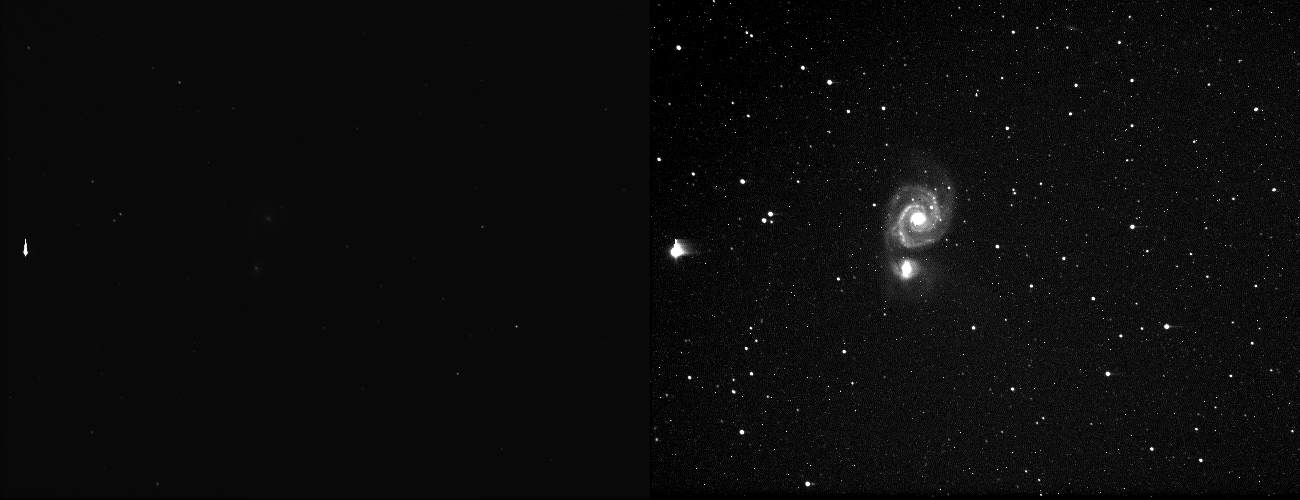
Most commercially available cameras have pixel groups that capture red, green, or cyan, and a combination of these dots gives you a color photo. In approximately the same way, cones in the human eye perceive color. The disadvantage of this approach is that each type of sensor senses only a narrow fraction of the light, so astronomical equipment captures large ranges of wavelengths, and filters are used to highlight colors. As a result, the raw data in astronomy is often black and white. Hubble shot the M 57 in 658nm (red), 503nm (green) and 469nm (blue), Starts With A Bang!

Then, using the filters, color images are obtained. With knowledge of the process, it is possible to create an image that most closely matches reality, although often the colors are not entirely real, sometimes this is done intentionally. This is called the "National Geographic effect." At the end of the seventies, the Voyager spacecraft flew past Jupiter, and for the first time in history they took pictures of this planet. National Geographic-style magazines have devoted entire spreads to stunning photographs processed with various color effects, and the published one is not entirely true. The most

the famous photograph taken by the Hubble telescope is the “Pillars of Creation” dated April 1, 1995. It recorded the birth of new stars in the Eagle Nebula and the light of young stars next to clouds of gas and dust. Filmed objects are located 7000 light years from Earth. The left structure is approximately 4 light years long. The protrusions on the “pillars” are larger than our solar system. The green color of the photo is responsible for hydrogen, red - for once-ionized sulfur, and blue - for twice-ionized oxygen. Why is she and many other Hubble photographs lined up with a ladder? This is due to the configuration of the second version of the wide-angle and planetary cameras. They were later changed, and today they are exhibited at the National Museum of Aviation and Cosmonautics.

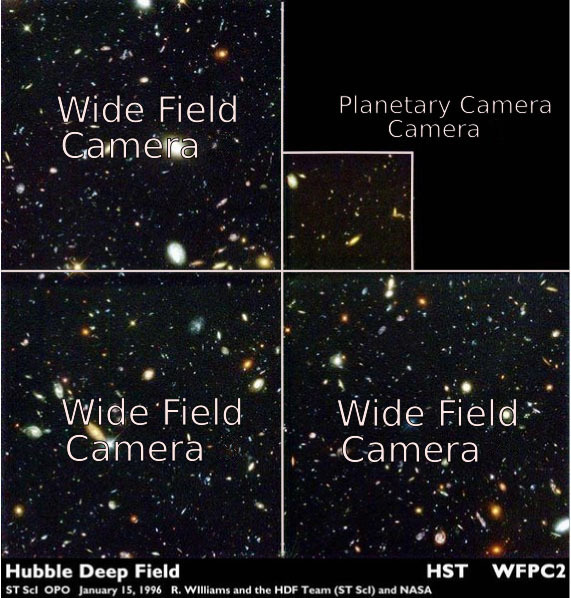
To mark the 25th anniversary of the telescope, a second photograph was taken, taken in 2014 and published in January of this year. It was produced by the third version of the wide-angle camera, which allows you to compare the quality of the equipment. Here are a few more famous photographs of the Hubble telescope. As their quality increases, maintenance flights are easy to spot. 1990 , supernova 1987A 1991 , Galaxy M 59 1992 , Orion Nebula 1993 , Veil Nebula 1994 , Galaxy M 100 1996 , Hubble Deep Field . Almost all of the 3,000 objects - this galaxy, and was captured about 1 / 28,000,000






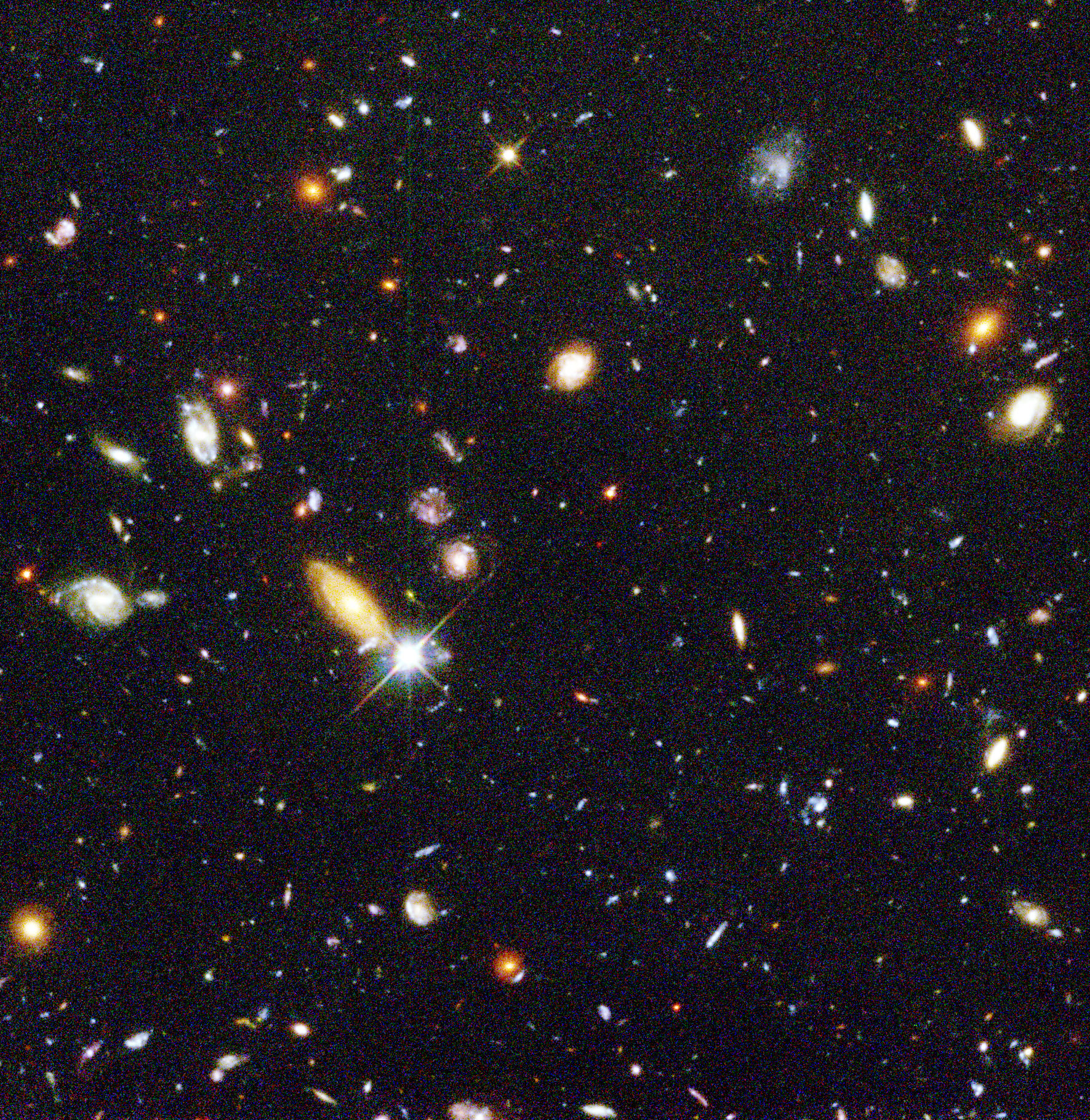
celestial sphere. 1997 , “signature” of the black hole M 84 1998 , spiral galaxy NGC 4314 1999 , Mars 2000 , Eskimo nebula 2001 , Galaxy ESO 510-G13 2002 , Galaxy Tadpole 2003 , V838 Unicorn 2004 , Snail or "Eye of God" 2005 , Galaxy Whirlpool 2006 , Orion Nebula 2007 , NGC 602 2008 , Mayol or Arp 148 object 2009 , Saturn and its four moons 2010 , pillars in the Carina Nebula 2011



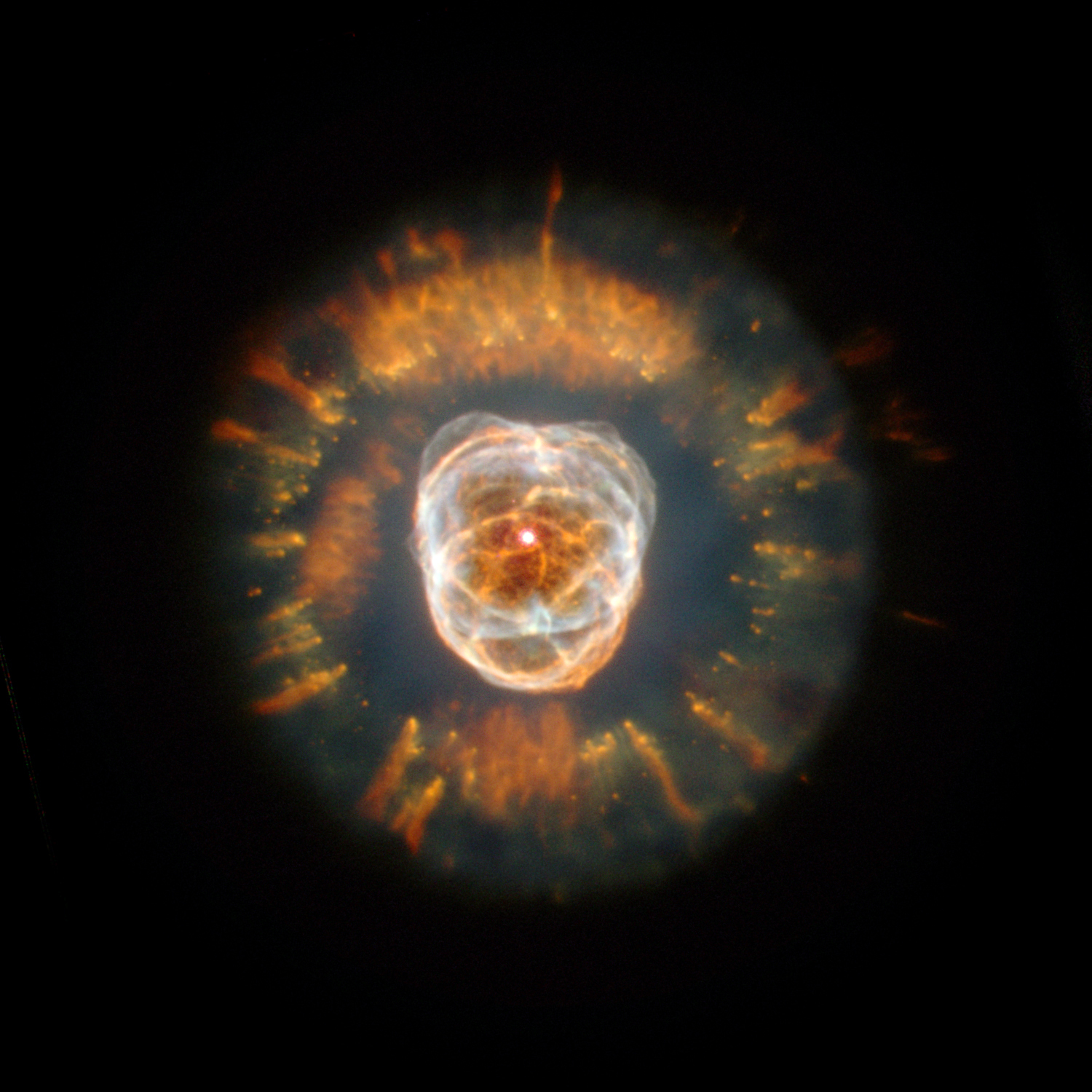


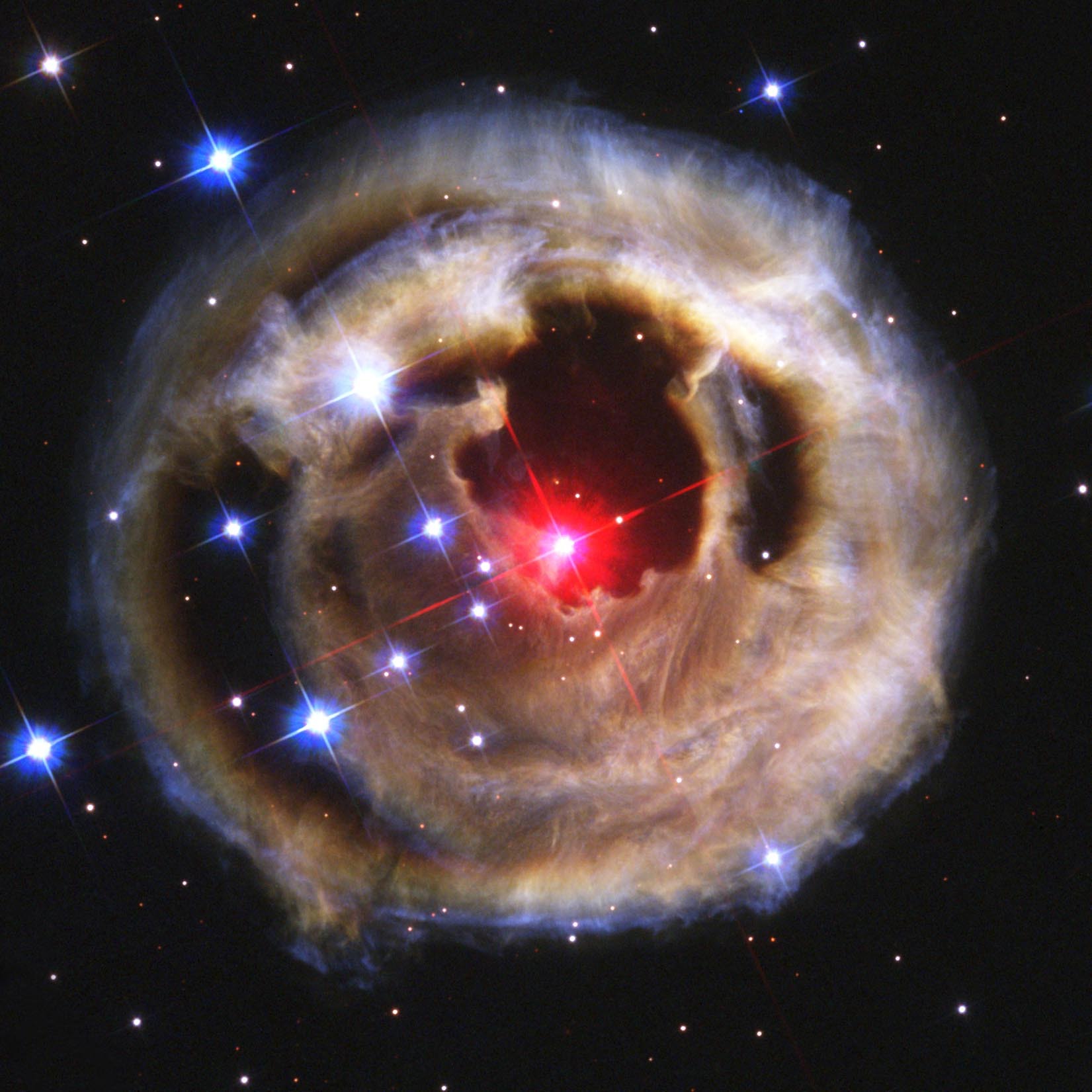




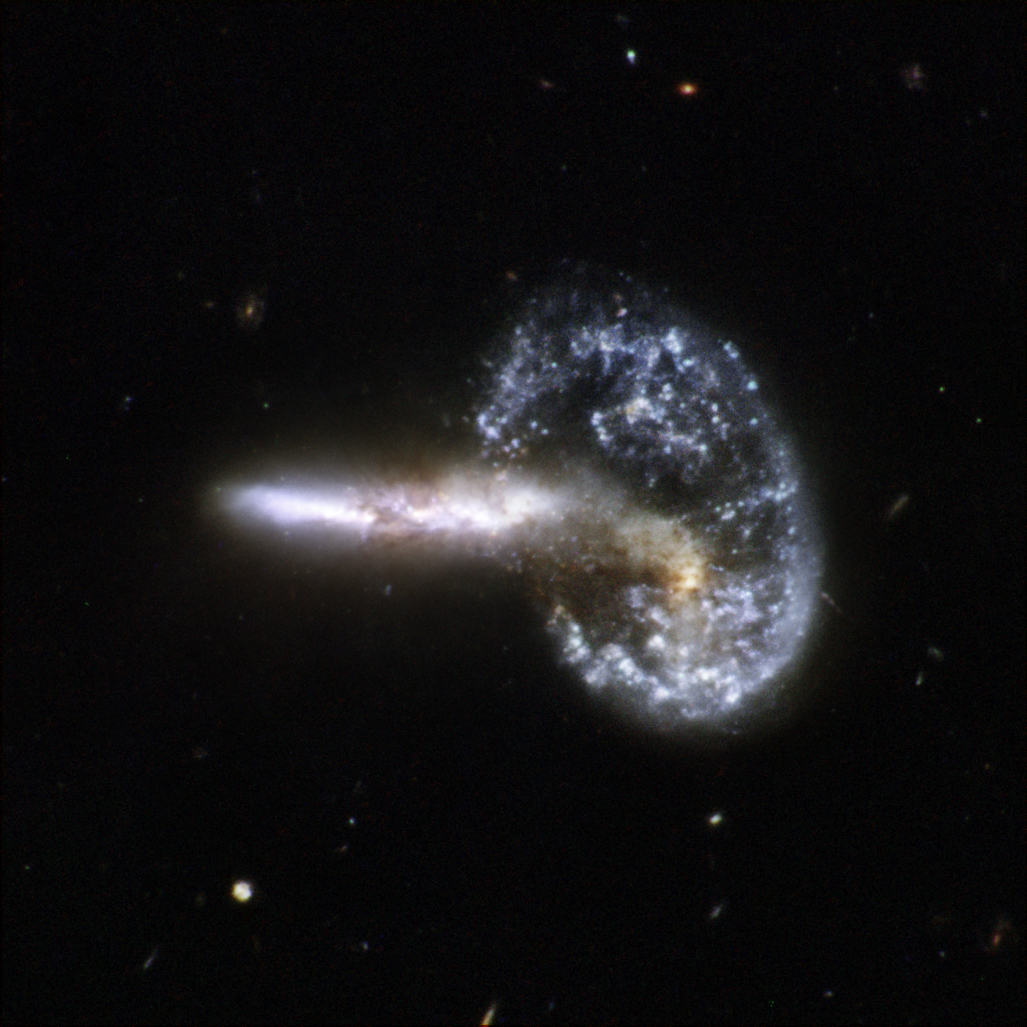


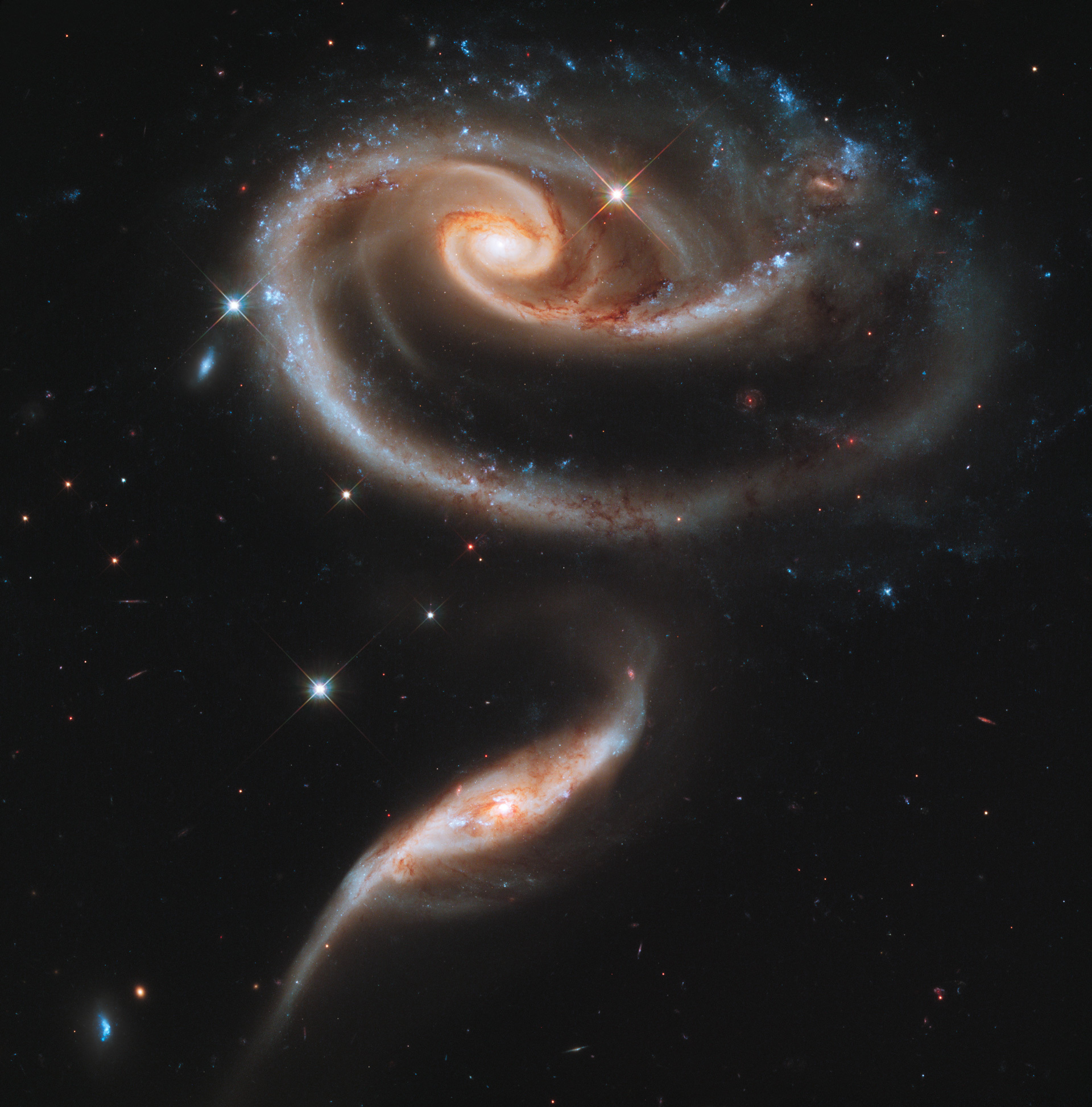
, interacting galaxies Arp 273 2012 , NGC 5189 2013 , Horsehead Nebula 2014 , Pandora's Cluster 2015 , snapshot for the 25th anniversary of the telescope - Celestial fireworks The Hubble will continue to function as much as possible. Now there is no technical possibility to repair the telescope. Initially, it was planned to return the telescope from orbit in the cargo compartment of the shuttle and provide it to the museum. But shuttles no longer fly, and existing and planned spacecraft can only return to Earth a crew and some cargo. Most likely, the telescope will simply burn in the upper atmosphere. Probably, NASA will somehow help to pass this process over the uninhabited parts of the surface of our planet.
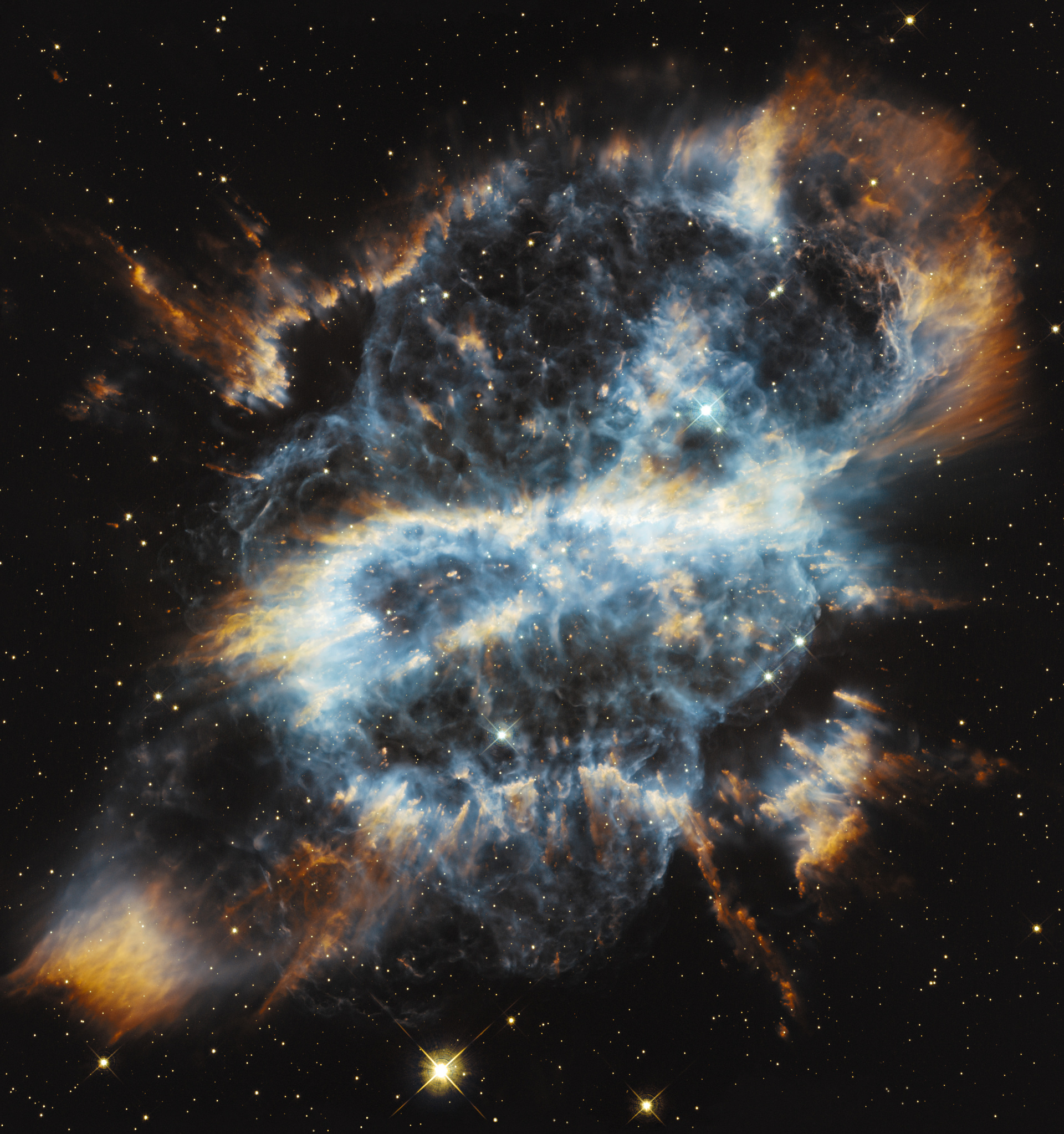

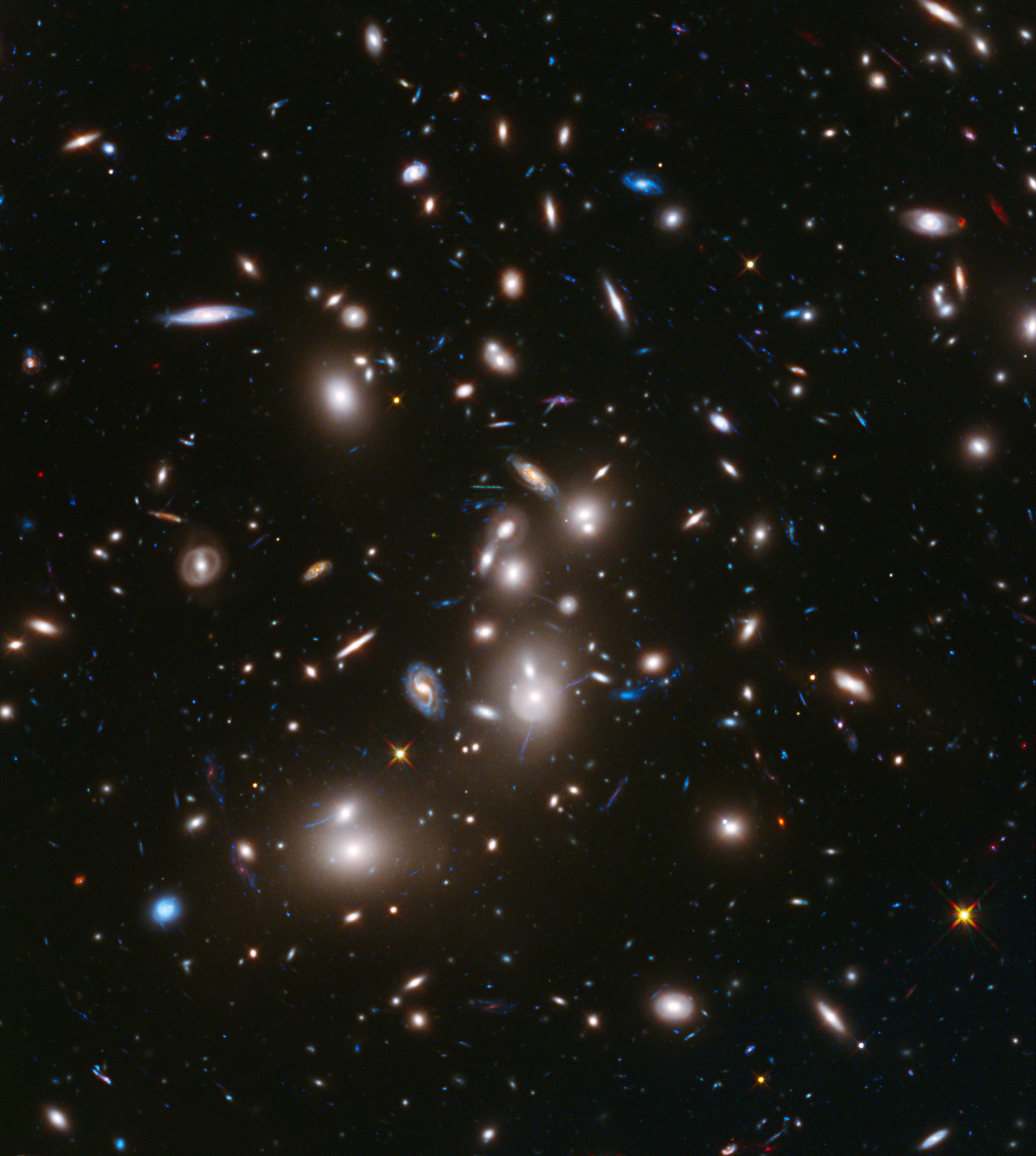

Photo of the Hubble Telescope, STScI and NASA . Photos from the telescope by years, NASA, etc.
